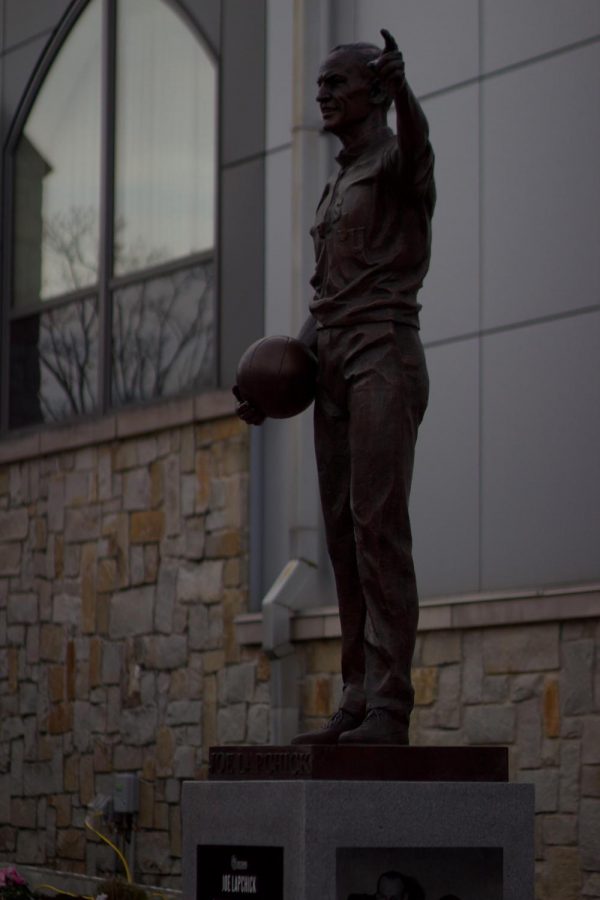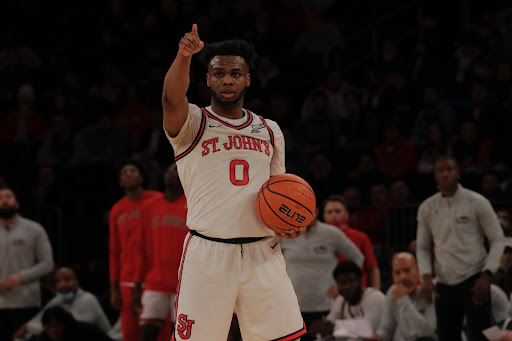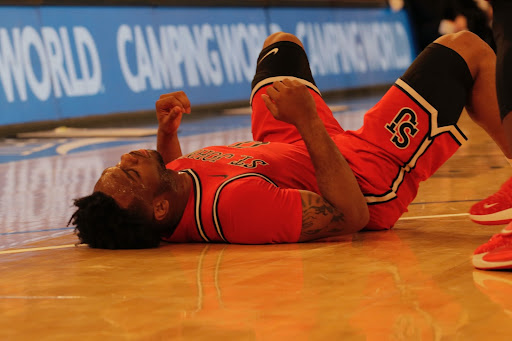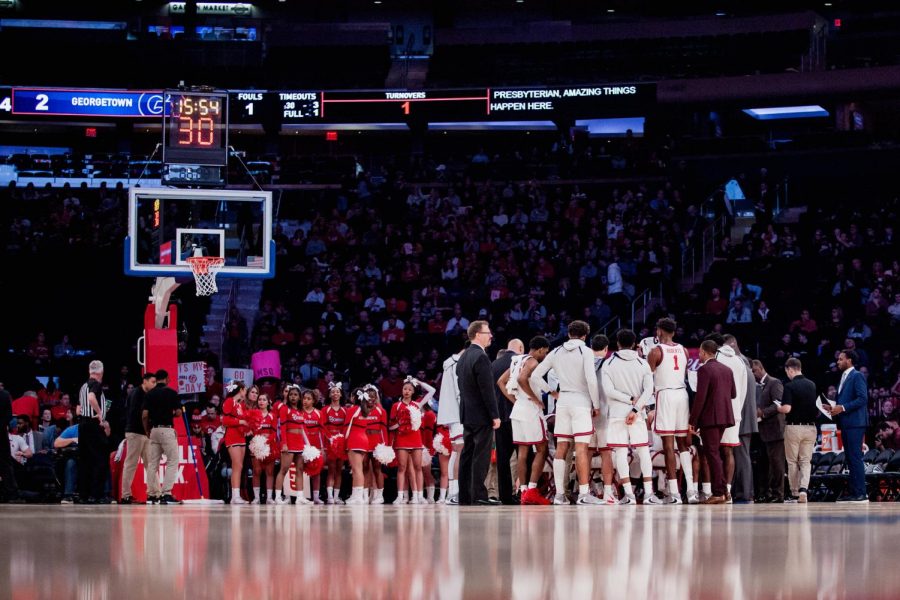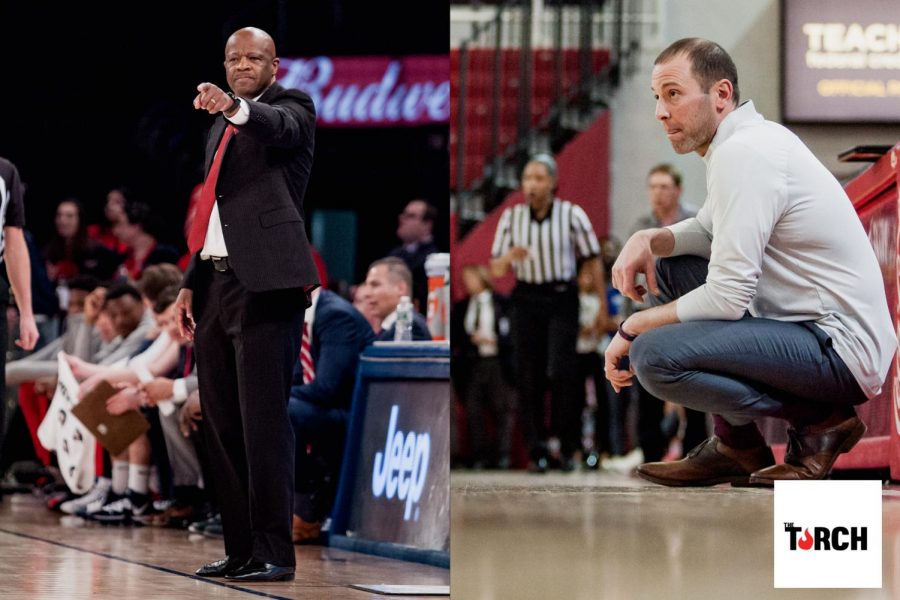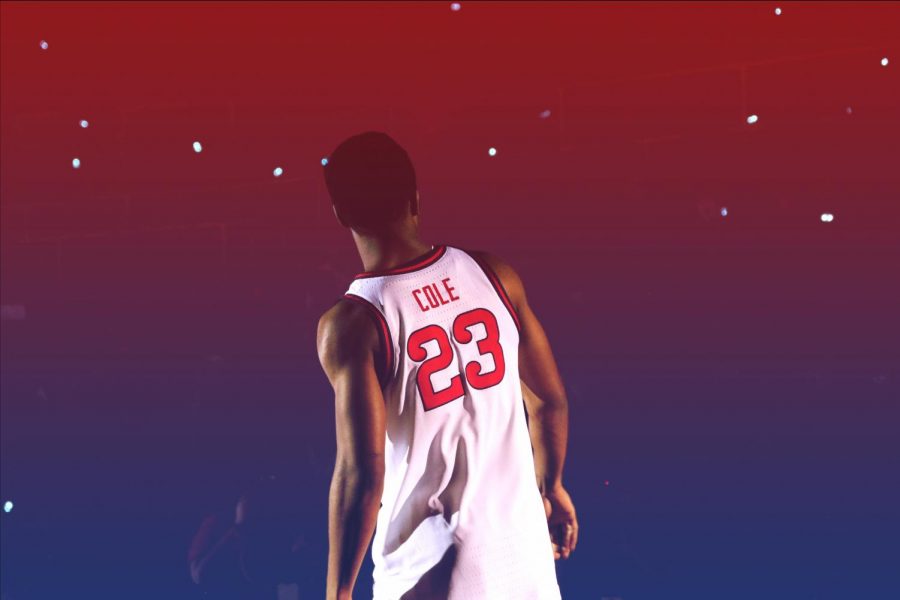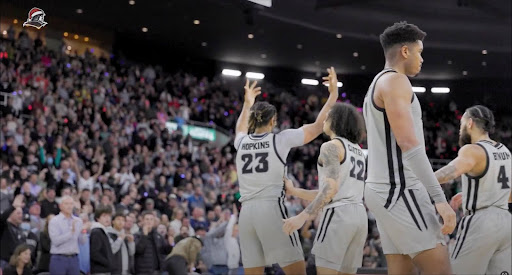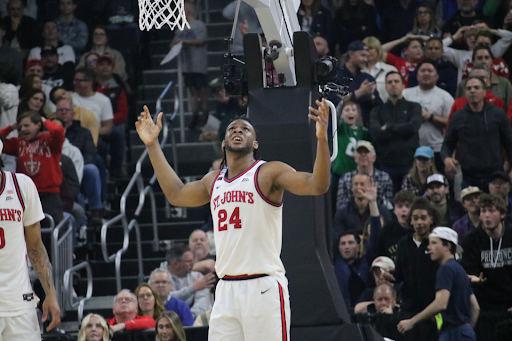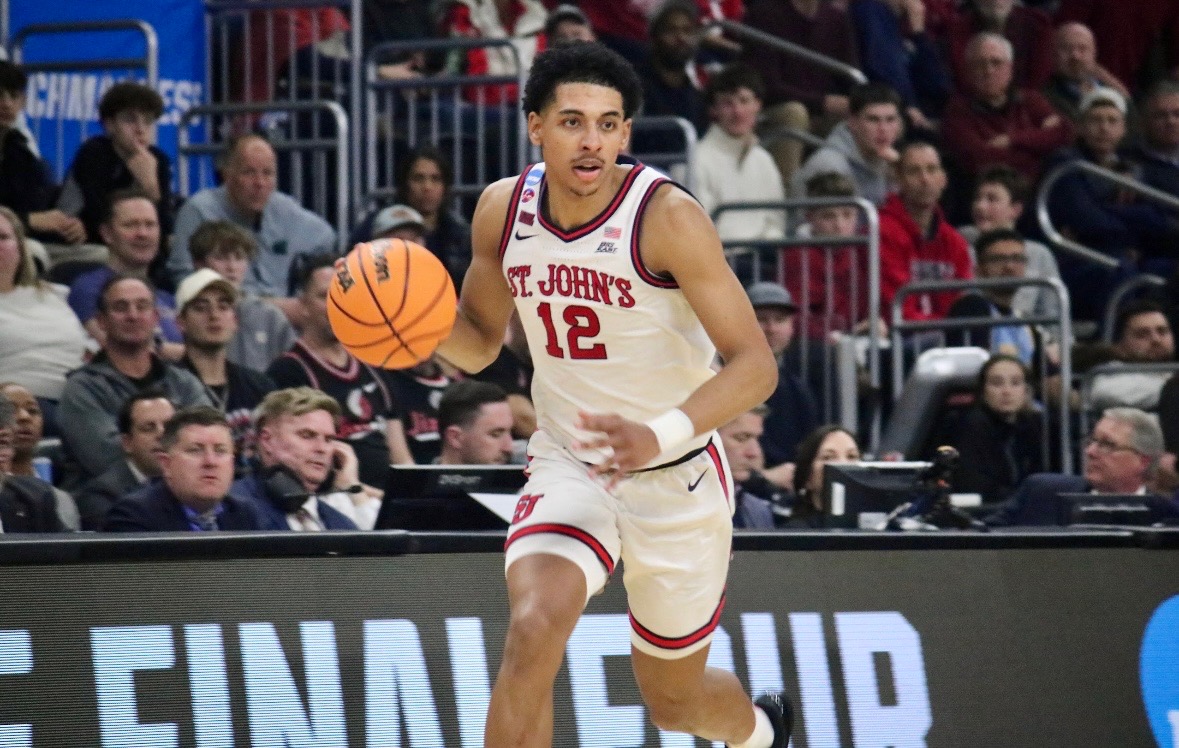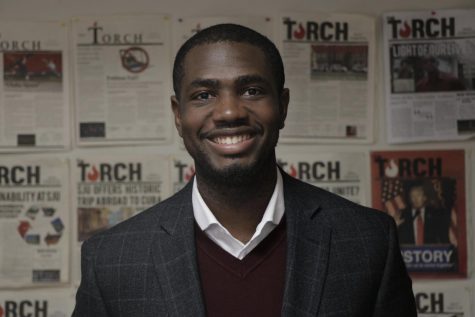Just as the crowd began to settle into the seats planted between Taffner Fieldhouse and Carnesecca Arena, St. John’s Athletic Director Anton Goff stepped up to the podium. All eyes focused were focused on Goff, who welcomed the crowd and greeted its familiar faces. Jack Kaiser, Lou Carnesecca and Chris Mullin accompanied the crowd, watching as he spoke and waiting for the red tarp to come off the nearly 12-foot structure to his right.
Underneath the cover was a lifelike design of one of the most decorated figures in the history of St. John’s athletics. Joe Lapchick, who won four National Invitational Tournament championships during his tenure at St. John’s, changed the culture of the University, both on and off the court.
Great moment as members of St. John's University and players who played under Joe Lapchick pose near his newly unveiled statue. Chris Mullin, Lou Carnesecca, Jack Kaiser, Dr. Richard Lapchick and AD Anton Goff were among the speakers and those in attendance. #sjubb pic.twitter.com/anzWBYnGyG
— Torch Sports (@TorchSports) December 2, 2017
“Coach Lapchick elevated St. John’s basketball to new heights, winning 334 games over 20 years at the helm of our program,” Goff said. During a time in which the NIT rivaled the NCAA Tournament as the premier setting for college basketball, Lapchick won four of St. John’s five titles.
Kevin Reed, a 1975 graduate of St. John’s and chair of the Tobin College of Business Board of Advisors, spearheaded the fundraising efforts for the statue several years ago. He wanted to honor Lapchick, a basketball Hall of Fame inductee and member of the Original Celtics.
Reed believes every St. John’s student should know the story of Lapchick, who faced backlash as head coach of the New York Knicks for drafting Nathaniel “Sweetwater” Clifton, the first black player in NBA history.
“Coach Lapchick was an agent of social change and activism long before it was popular,” Reed said during the ceremony. “He was a man who practiced what he preached and who had the courage of his convictions to act in accordance with his strongly-held moral and ethical beliefs.”
Dr. Richard Lapchick, who said one of the fondest recollections of his father was his image swinging from the rope of a tree outside their Yonkers home for signing a black player, spoke after Reed.
“I call my dad the first activist coach and athlete,” Dr. Lapchick said. “He never took a knee. He never stood in a protest line. But he simply acted as an activist athlete by doing what he felt was the right thing, the morally just thing, the ethical thing. To stand up for justice and not block its path.”
Members on the stage, including Dr. Lapchick’s sister Barbara and University President Conrado “Bobby” Gempesaw, stood on either side of the statue and removed the tarp to unveil Lapchick.
He stood tall, the letters “SJU” in writing across the chest of his coaching uniform. In his right hand was a basketball. His left hand was in the air, pointing in the distance with a smile and whistle around his neck.
The sculptor, New Jersey-native Brian Hanlon, created the statue of Lapchick. Hanlon has created over 300 public and private art pieces since 1987, according to his website.
He is the official sculptor for the Naismith Basketball Hall of Fame and has designed sculptures of Shaquille O’Neal, Bob Cousy, Magic Johnson and John Thompson, among many others.
Following the outdoor ceremony was a reception, where members of the community who celebrated the occasion gathered for a chance to talk and commemorate the life of Lapchick, whose impact extended beyond basketball.
Before the end of his speech and as the crowd eagerly awaited the unveiling of the statue, Reed concluded by thanking St. John’s. The idea of creating a statue to honor Lapchick began after watching a documentary on him. He asked himself why there was no statue of him on campus and told himself he wanted do something to honor his legacy.
The first piece of an area to be known as “Legend’s Plaza” was finally introduced. And for Reed, the contributions and work that went into unveiling the statue gave him a new sense of pride as an alumnus.
“Thank you all,” he said before concluding. “And I have never been more proud to be part of the St. John’s family than I am today.”



